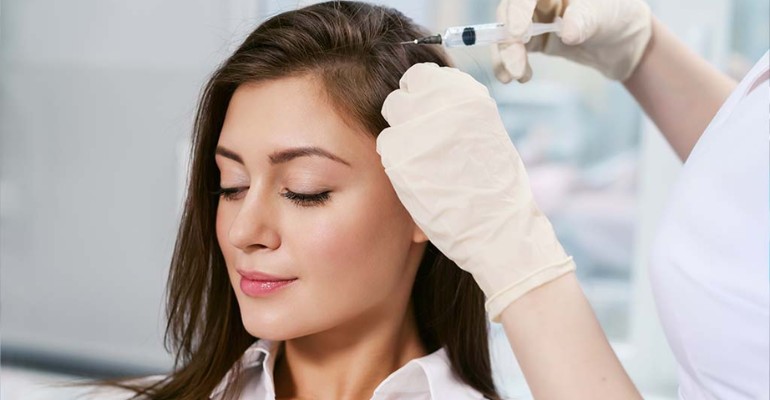Hair Restoration Solutions

Hair Restoration Solutions: From PRP to Laser Therapy
Hair restoration encompasses a variety of medical and cosmetic treatments designed to combat hair loss and restore hair growth. These methods range from surgical procedures to non-invasive therapies, each offering unique benefits for individuals suffering from different types of hair loss.
Importance of Hair Restoration
Hair loss can significantly impact an individual's self-esteem and confidence. Effective hair restoration solutions provide not only physical improvements but also psychological benefits, enhancing overall well-being and quality of life.
Brief Overview of Techniques
Several hair restoration methods are available today. These include surgical procedures like hair transplants, non-surgical options such as Platelet-Rich Plasma (PRP) therapy and Low-Level Laser Therapy (LLLT), and topical treatments like Minoxidil. Each technique has distinct advantages and is suitable for different stages and types of hair loss.
Types and Categories of Hair Restoration Techniques
Surgical Methods
Hair Transplants
Hair transplants involve relocating hair follicles from a donor area (typically the back of the head) to the balding or thinning areas. This surgical approach is highly effective for those with significant hair loss.
Follicular Unit Transplantation (FUT)
FUT involves removing a strip of scalp from the donor area, which is then dissected into individual follicular units and transplanted to the recipient area. This method can transplant a large number of grafts in one session but leaves a linear scar.
Follicular Unit Extraction (FUE)
FUE is a less invasive technique where individual hair follicles are extracted directly from the donor area and transplanted to the balding regions. This method leaves minimal scarring and has a quicker recovery time compared to FUT.
Non-Surgical Methods
Platelet-Rich Plasma (PRP) Therapy
PRP therapy involves injecting platelet-rich plasma, derived from the patient's own blood, into the scalp. This plasma contains growth factors that stimulate hair follicles and promote hair growth.
Low-Level Laser Therapy (LLLT)
LLLT uses red light lasers to stimulate hair follicles, increase blood flow, and promote hair growth. This non-invasive treatment is often used in conjunction with other therapies for optimal results.
Topical Treatments
Topical treatments, like Minoxidil, are applied directly to the scalp to stimulate hair growth and prevent further hair loss. These treatments are commonly used for mild to moderate hair loss.
Oral Medications
Oral medications, such as Finasteride, help prevent hair loss by inhibiting the hormone responsible for hair follicle shrinkage. These medications are typically prescribed for long-term use.
Scalp Micropigmentation (SMP)
SMP involves tattooing tiny dots on the scalp to mimic the appearance of hair follicles. This cosmetic solution is ideal for those who prefer a non-surgical approach to create the illusion of fuller hair.
Symptoms and Signs of Hair Loss
Early Signs of Hair Loss
Thinning Hair
Thinning hair is often the first noticeable sign of hair loss. Individuals may observe more scalp visibility or a decrease in hair volume.
Receding Hairline
A receding hairline, particularly around the temples, is a common early sign of hair loss in men. Women may also experience a broadening of the parting line.
Advanced Symptoms
Bald Spots
Bald spots or patches are more pronounced areas of hair loss, often seen on the crown or other parts of the scalp.
Significant Hair Thinning on Top of the Head
Severe hair thinning across the top of the head is a common symptom of advanced hair loss, especially in androgenetic alopecia.
Causes and Risk Factors
Genetic Factors
Androgenetic Alopecia
Androgenetic alopecia, or pattern baldness, is the most common cause of hair loss, influenced by genetic and hormonal factors.
Hormonal Changes
Thyroid Issues
Thyroid disorders, such as hypothyroidism or hyperthyroidism, can lead to hair loss due to hormonal imbalances.
Menopause
Hormonal fluctuations during menopause can cause hair thinning and increased shedding in women.
Medical Conditions
Alopecia Areata
Alopecia areata is an autoimmune condition where the immune system attacks hair follicles, leading to patchy hair loss.
Scalp Infections
Infections of the scalp, such as ringworm, can cause temporary hair loss if not treated promptly.
Lifestyle Factors
Poor Diet
A diet lacking essential nutrients, like vitamins and minerals, can contribute to hair loss and poor hair health.
Stress
High stress levels can trigger hair loss conditions like telogen effluvium, where hair prematurely enters the resting phase.
Hair Care Practices
Frequent use of harsh hair treatments and styling tools can damage hair follicles and lead to hair loss.
Preventive Measures
Healthy Diet
Essential Nutrients for Hair Health
A balanced diet rich in vitamins and minerals is crucial for maintaining healthy hair. Key nutrients include biotin, zinc, iron, and vitamins A, C, D, and E. Protein is also essential as hair is primarily made of keratin, a type of protein.
Stress Management
Techniques to Reduce Stress
Chronic stress can trigger hair loss conditions like telogen effluvium. Effective stress management techniques include regular exercise, mindfulness meditation, adequate sleep, and engaging in hobbies.
Proper Hair Care
Avoiding Harsh Treatments
Limiting the use of heat styling tools, chemical treatments, and tight hairstyles can prevent hair damage and breakage.
Gentle Hair Handling
Using a wide-tooth comb, avoiding vigorous towel drying, and opting for gentle, sulfate-free shampoos can help maintain hair health and prevent unnecessary stress on the hair shafts.
Conclusion
Hair restoration solutions range from surgical options like hair transplants to non-invasive treatments such as PRP therapy and LLLT. Understanding the symptoms and causes of hair loss is crucial for selecting the most appropriate treatment. Preventive measures, such as a healthy diet and proper hair care, play a significant role in maintaining hair health.
For those struggling with hair loss, seeking early consultation with a specialist can help determine the best course of action. Continued research and adherence to recommended treatments can significantly improve outcomes and restore both hair and confidence.
